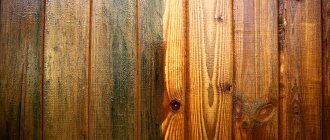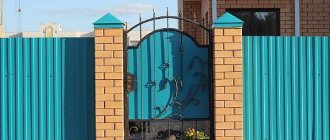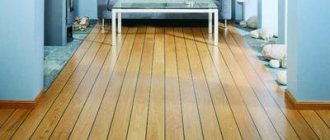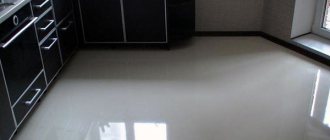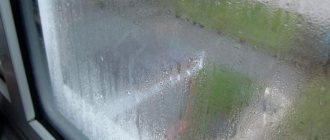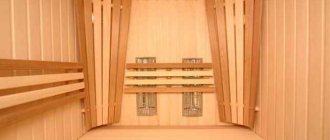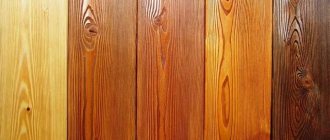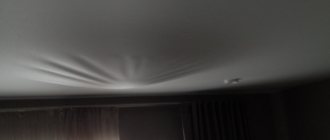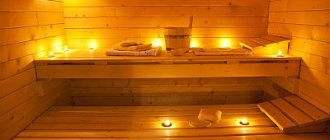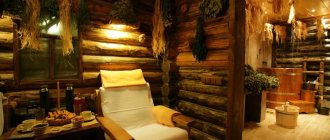Only at first glance it seems that a sauna stove is a simple structure that you can put together yourself. This will require professional skills and many years of experience.
Sometimes even a store-bought stove starts smoking after the first fire. Increased smoke in the room makes it impossible to breathe.
Smoking stove in a bathhouse
It is not always possible to fix the problem yourself; a complete redevelopment of the bathhouse or complex repairs may be required. The reason for the return of smoke back into the chimney and its further spread throughout the bathhouse is often due to external factors - the presence of a nearby wall or tall tree.
Why does the stove smoke in the bathhouse?
The construction of a sauna stove is relatively simple. The design includes 4 functional elements:
- ash pan - a chamber located under the firebox, ash and ash accumulate here - the remains of burnt wood or coal, it should be cleaned periodically;
- firebox - a chamber where fuel burns, air is heated, which then, moving through the chimney channels, heats the walls of the housing, the combustion chamber and the ash pan are separated by a grate;
- chimney pipe - a channel through which gaseous combustion products are discharged outside; the correct structure of the chimney ensures draft;
- A heater is a device unique only to a sauna stove; it is a container with stones that heat up from the body, accumulate heat and release it to the air, but more evenly and much longer than a metal stove does.
If there is no draft in the bathhouse, the cause is any violation in the operation or structure of the structural elements, with the exception of the heater.
Errors in the design of the furnace leading to smoke
If, at the first attempt to light the stove in the bathhouse, smoke comes out, this indicates design errors. It is recommended to immediately contact a specialist:
- poor draft in a sauna stove most often appears when there is an error in the chimney design, channel cross-section, height of the device, internal surface - these parameters determine the functionality of the structure;
- the second fundamental mistake is thermal insulation, in the combustion chamber the gas has a very high temperature, rising through the pipe, it cools when it comes into contact with the walls of the chimney in the bathhouse, if the temperature drops too much, the smoke comes back; the chimney pipe, especially a metal one, must be carefully insulated;
- The stove itself needs to be thermally insulated: if the bath area is large or the steam room and dressing room are heated at the same time, the body loses a lot of heat and the smoke cools;
- tightness - we are talking about seams and doors; the firebox and ash pan must close tightly to ensure good traction.
Important! If smoke does not appear in the bathhouse immediately, but after several years of operation, this does not indicate a design error, but a malfunction or exhaustion of the resource.
Pipe length
The height of the chimney in the bathhouse matters. It must rise above the ridge of the building, otherwise the draft will not be enough for normal operation of the furnace. The smoke exhaust structure is protected with a metal cap. If it is not there, strong winds can easily penetrate inside and prevent smoke from being removed.
Another design error is the location of the smoke exhaust duct at the same level as the combustion chamber door or even below it. In this case, normal draft is not enough to prevent the smoke from returning.
The best option is a straight pipe. Deviation from the vertical is allowed, but weakens traction. Turns and angles increase the risk of clogging.
Insufficient chimney cross-section
The dimensions of the stove in the bathhouse depend on the size of the heated room. This parameter determines not only the dimensions of the combustion chamber, but also, accordingly, the diameter of the chimney. These device parameters are of decisive importance:
- if the diameter is too small, the draft is initially good, but during intensive use the narrow pipe simply does not have time to let through a large volume of gas, and the heater in the bathhouse smokes;
- if the diameter is too large, the draft is very poor, it is difficult to light the stove, it smokes almost constantly;
- the shape of the chimney duct also matters, the best option is a round cross-section, turbulences are formed at the corners of the square, they interfere with the escape of smoke, which leads to smoke;
- The narrowing along the smoke exhaust channel significantly impedes the passage of gases, which also causes the draft to overturn.
Important! The best option for a stove in a bathhouse is a steel chimney. However, this option must be thermally insulated, and not only when passing through the ceiling, but along the entire length.
Leaky chimney
Cracks in the brickwork or burning through the seams of a metal chimney makes it leaky. This is a very dangerous problem, since through such openings smoke enters the room, and in an inconspicuous amount. The user does not feel the appearance of carbon monoxide, and the latter at a minimum concentration can lead to death.
Also, sparks get inside the steam room through the joints, and this threatens a fire in the bathhouse.
Against the background of such dangers, traction failure does not seem to be a serious problem. However, it is also present. Repair of sauna stoves includes inspection of joints and seams for tightness and elimination of violations.
The chimney is clogged
The inner surface must be smooth so as not to interfere with the release of gases. Along with the smoke, some of the ash also comes out through the chimney. If the inside surface of the channel is uneven, ash and soot remain on the walls, gradually clogging the chimney.
At first, this does not affect traction at all. However, accumulations of soot on the walls, especially if the pipe is brick, provoke increased ash deposition. The process accelerates, and after a short time the stove begins to smoke.
An additional danger for a bathhouse is the risk of soot igniting when hit by an accidental spark.
Diagnosis and elimination of faulty ventilation system
The steam room in the bathhouse is not a sealed room. Natural ventilation is usually installed here, since forced ventilation creates too thin air. The system consists of openings for inflow and outflow. The latter are placed at different heights, and the difference in air temperature in the steam room and outside provides the necessary movement.
Malfunctions of the ventilation system are obvious:
- in the steam room, the inlet opening is located at a height of 15 cm from the floor so that the incoming air has time to warm up as much as possible; otherwise the steam room does not heat up, no matter how hard the stove is heated;
- an outflow hole is formed on the opposite wall, otherwise there is no air movement, and the stove, having ceased to receive the required volume of oxygen, begins to smoke;
- the outlet hole must be higher than the supply hole, since warm air is lighter; if this requirement is not met, the ventilation in the bathhouse again does not work;
- the openings are protected with grilles to detect clogging of the ventilation ducts; if the latter occurs, the operation of the system is disrupted.
Important! A stove in a bathhouse with poor ventilation does not develop enough power and begins to smoke after some time when there is not enough air.
The situation can be corrected by creating the correct ventilation system. If the configuration of the steam room or the entire bath is complex, experts recommend installing forced ventilation.
Smoke due to damage to the oven body
If there is draft in the chimney and combustion chamber, the cause of smoke may be damage to the housing. Most often this happens with a metal structure. There are a lot of welds here, and if one of them is made poorly, smoke from the firebox enters the room.
Over time, the seams on the metal product overheat, and the heater smokes after several years of use. Repairing a metal sauna stove is the only way out in this situation.
Another reason is insufficient thermal insulation not only of the chimney in the bathhouse, but also of the stove body. With weak initial draft, overcooling of the furnace leads to cooling of the gases. The draft disappears and the heater smokes.
A possible reason is insufficient sealing of the cleaning doors. If they do not close tightly, sufficient draft force is not generated.
The stove in the bathhouse smokes when the door is open
In the correct design of a heater, there is always traction. So if the stove in the bathhouse smokes through the open door, this indicates that the draft has turned over. The most common case is a clogged chimney, but it is not quite common.
If the chimney gradually becomes dirty, the draft decreases gradually. If a brick version is installed, and the stove has been in use for a long time, there is a risk of brick collapse. When a fragment gets inside the chimney or below, the operation of the heater is disrupted, and smoke goes into the firebox.
The blower is not long enough
Fuel requires air to burn. It is supplied to the grate, where coal or wood is burned, through a ash pit, that is, an ash pan. The air supply is controlled by the doors. When the stove is lit, the door is opened slightly to allow for a stronger fire. When the fuel should simply smolder, the inflow is reduced by closing the door.
The ash pan should have the same dimensions as the grate. Poor draft in a sauna stove occurs if the vent is smaller in area.
The air ducts in the furnace are clogged
If the stove in the bathhouse heats not only the steam room, but also the dressing room and rest room, it is equipped with air ducts. For a small area this is a completely acceptable option. Air ducts become clogged over time. They are more difficult to clean since they are mostly horizontal structures.
To clean the air ducts, potato peels are burned in the firebox. At the same time, you can see white flakes flying out of the pipe on the roof - a sign of cleansing.
You can also periodically heat it with aspen wood. Wood of this type is very wet, which leads to the soot layer becoming wet and falling off.
Taking a break from using the oven
Sometimes the stove in the bathhouse smokes not because there is some kind of malfunction, but because it is used too rarely. If the bathhouse is heated once a week, then the firebox cools down so much that the gas does not warm up enough to rise up the chimney.
It is recommended to first warm up the pipe by burning straw, paper or other fuel that burns quickly in the firebox.
Smoke when lighting
The stove smokes when lit in the cold season. This problem often occurs with ovens that are not used regularly. For example, the unit is located in a bathhouse or country house. A column of cold air forms a plug in the chimney that blocks the draft. Stove makers advise getting rid of it in the following ways:
- bring a burning torch to the smoke collector,
- burn a piece of paper directly next to the smoke collector.
These techniques allow the plug to warm up, rise up and come out. The problem of cold plug occurs not only with brick, but also with metal stoves that are installed in bathhouses and saunas (heaters). If the house is 2-story, you should know that the plug often collects in the horizontal part of the chimney, if it is on the 2nd floor. According to masonry technology, the length of this section (box) should not be more than 2 m.
Other causes of stove smoke
Poor-quality mortar, too thick masonry joints, lack of firebox lining or deformation in it lead to cracks in the furnace body. This causes constant smoke; it is not recommended to operate the unit in this condition. Repairs are carried out by sealing the cracks with special adhesive solutions. If this does not help, you will have to disassemble the body and build the stove again.
Smoke coming from a stove into a heated room is an unpleasant and dangerous phenomenon, but it is sometimes difficult for an inexperienced person to determine the reasons for its appearance. Why the stove smokes, possible reasons for its malfunction and tips on how to eliminate them from an experienced stove maker are given below.
Sometimes in calm weather the stove works normally, but in windy weather it either burns or “releases” smoke into the room from the stove door or damper. The cause of this is most likely a tall tree or wall located next to the house. The wind, hitting such a barrier, enters the chimney and prevents the smoke from escaping. To correct the situation, it is necessary to install an umbrella cap on the pipe, which will protect it from the wind. Such a cap is also needed if the stove is difficult to light in hot weather.
If there are no high barriers to the wind near the chimney, then a possible reason why the stove smokes may be the location of the chimney below the highest level of the roof. According to the rules, the pipe must be located at least 25 centimeters above the ridge.
It is very easy to check whether a cap is needed over the chimney if the stove is smoking. Two halves of brick are placed at the corners of the pipe, and a sheet of iron is placed on them. If after 3-5 minutes the stove stops smoking, then a stove hood is needed.
Another possible reason why the stove smokes may be the destruction of the upper seams of the pipe masonry (if it is brick) by rain and exhaust gases, as a result of which the upper bricks fall out of it. The wind gets into the damaged areas of the chimney, and the stove begins to smoke. In such a situation, the pipe must be repaired.
A very possible reason why a Russian stove smokes is the small size of the pipe or views, as well as a poorly closing view door. It is necessary to make overlaps at the top of the pipe, which not only create good draft for the stove, but also improve the appearance of the pipe.
The blower in a Russian stove must be shorter than the firebox, otherwise the cold air entering the blower in large volumes reaches the back of the firebox and, pushing away from it, displaces smoke from the firebox. If you put such a vent in half a brick, then the stove will not smoke.
It happens that the stove smokes in any weather, and when you open the door, the smoke seems to “stretch” after it and enters the room. When this happens, you need to look into the firebox. If there is an oven under the stove stove, then there must be a brick wall between it and the combustion chamber. If it or the cabinet is lower than the top of the door opening, then you need to make a clay border on the wall so that it is higher. The draft in the oven will be excellent even if the height difference between the side and the stove is several centimeters.
Another possible reason why the stove smokes is that the gases exit the firebox below the opening of the fire door. This situation can be corrected by building a brick wall across the firebox, the height of which will exceed the height of the door opening.
If the stove smokes and smoke comes out of the valve or valve, it means that the pipe is clogged with soot or, for example, a brick that has fallen into it. The chimney needs to be cleaned.
Another, quite common, possible reason why a stove smokes is the clogging of the vent with ash, and if the stove is a heating and cooking stove, then the oven burns out.
Other reasons
There are other reasons why cravings disappear and the stove in the bathhouse begins to smoke intensely. In such a situation, not only internal factors are at work - design errors, clogging, but also external ones:
- wind – strong gusts of wind lead to smoke being thrown into the oven; having lost the ability to move upward, the smoke goes into the room, this problem is easily solved by the installation of chimneys or weather vanes, the devices prevent the ingress of water and snow;
- high humidity - at the same time the atmospheric pressure decreases, and the smoke becomes denser, it moves very reluctantly, this phenomenon can be seen during fog: the smoke spreads along the roof and returns back at the slightest gust of wind;
- the hotter the sun shines, the worse the draft; the temperature difference between the smoke in the chimney and the air outside is too small to create draft, and at temperatures above 35 degrees, capsizing occurs.
Sometimes, to prevent smoke, you just need to light the stove correctly.
Wind
A temporary cause of backdraft can be the wind, the direction and strength of which “drives” the smoke back into the chimney. Tall trees or buildings located near the house can contribute to this.
Install an umbrella or deflector on the top edge of the pipe. These devices significantly improve draft, protect from rain and prevent the wind from blowing smoke back into the chimney.
To date, many deflector designs have been developed. There are rotating models that are themselves installed by the force of the wind so that there is no interference with the smoke.
Many people are interested in the question: how to line an iron stove with bricks? Read useful information in our article. For information on self-repair of Ariston water heaters, see here.
Read about winter kits for air conditioners at this link.
How to remove back draft in a chimney
Problems with traction in the bathhouse are divided into 2 categories: those associated with errors in the design and those that appear during operation.
The first includes the illiterate structure of the chimney. If its diameter is too small, or the pipe has narrowings, then the only way to solve the problem is to completely disassemble the device.
Group 2 includes situations when the draft disappears due to clogging of the chimney pipe, filling of the ash pan, or loss of tightness. Repairing the sauna stove or cleaning it completely eliminates the problem.
The owner of the bathhouse can eliminate some of the reasons for the draft tipping over on his own:
- clogging of the chimney in the bathhouse - the operating rules oblige the owner to clean the chimney or invite workers to do this, clean the chimney mechanically - using a brush on a cable, or burning with wood; flammable liquids cannot be used;
- if the chimney is made of brick or ceramic, you can reduce clogging by installing a metal sleeve inside it; its walls are smooth, soot is deposited here with difficulty, so you will have to clean the pipe much less often;
- tightness - all detected cracks or leaky joints should be immediately covered with sealant, if the stones of the brick heater are cracked or the same thing happened to the chimney, alas, the stove will have to be completely disassembled;
- if the chimney pipe or the stove itself is overcooled, it is necessary to improve the thermal insulation, the body is plastered, the chimney is insulated with special materials;
- if the ash pan is too long, the wind from the street hits the wall of the combustion chamber and pushes smoke into the room, this problem is solved by filling part of the ash pan with bricks; if the ash pan is short, the latter is remade.
For more complex problems, turn to an experienced stove maker.
What's wrong with a brick chimney?
Anyone who has had to choose a stove for a bath knows perfectly well that the structure of a brick chimney is significantly different from the chimney of a steel or cast iron heater. Therefore, the method of searching for the reasons why the stove smokes mercilessly, sometimes even after thoroughly heating the room, is also different.
For brick stoves and chimneys, the check is performed in the following sequence:
Using a bunch of grass and dry paper, we determine the presence of air movement in the pipe. If the chimney cut height is more than 4 m, and the cross-section is more than 10x10 cm, then the flow or draft can be felt even with your hand. If there is a flow, this means that the stove is smoking due to the firebox, otherwise you will have to find out why there is no draft in the sauna stove on the roof of the sauna;
The second step is to check the condition of the smoke duct. Using a flashlight and a soot brush on a cord, we check that there are no foreign objects in the pipe, and at the same time we clean dirt and soot from the walls of the channel; Checking to see if the stove smokes after servicing
It will also be useful to pay attention to the intersections of the chimney through the roof and ceiling. In these areas, the chimney often splits due to the lateral load on the roof from snow and wind
In such a situation, the stove in the bathhouse smokes even with the door open. The pipe will have to be dismantled and replaced with new masonry
In these areas, the chimney often splits due to the lateral load on the roof from snow and wind. In such a situation, the stove in the bathhouse smokes even with the door open. The pipe will have to be dismantled and replaced with new masonry.
Poor draft in a brick sauna stove may also be a consequence of a reversal in the flow of flue gases. The draft in the chimney is excellent, the stove burns and does not smoke even when heated with substandard wood, but a strong gust of wind, especially if the doors in the bathhouse are wide open, leads to a change in the direction of the flue gases to the opposite.
The reason for this phenomenon is that the cross-section of the smoke channel is too large. How to remove back draft in a chimney? To make the stove not smoke in a strong wind, you need to:
- Align the height of the chimney head above the level of the bathhouse roof according to the recommended dimensions;
- Disassemble the top of the chimney and replace it with a metal insert in a protective casing and mineral fiber insulation.
In practice, many owners managed to bring the bathhouse stove “to life” and not smoke using a weathervane rotary nozzle on the pipe. The device is inexpensive, installing it on a sauna chimney is easier than relaying bricks, and at the same time it is possible to solve the problem of how to improve the draft in a sauna stove by 10-15%.
It also happens that for some time everything works flawlessly and suddenly one day the stove in the bathhouse starts smoking. What should you do in this case? The reason for this may be a chimney clogged with soot. The problem is solved by simple cleaning. You need to know how to clean a chimney in a bathhouse correctly. If the pipe has no bends, then this will be quite easy to do. Take a rope, attach a brush with a weight to it, and use this device to clean the chimney.
We invite you to familiarize yourself with the Kuznetsov bell furnace with your own hands, ordering
An overcooled chimney pipe can also cause poor draft. This happens in cases where the stove has not been used for a long time. To solve this problem, the chimney should be heated. This is done using a lit rag, which should be soaked in kerosene. The pipe will heat up and there will be no more problems with the operation of the furnace.
Due to the use of low-quality firewood, soot may settle on the inner walls of the chimney. To avoid this, you should first light the stove and then add firewood.
There are stoves in which the size of the blower is equal to the width of the stove. The air entering the furnace from the blower is pushed away from the back wall and goes out. To solve this problem, it is necessary to close part of the blower.
How to increase draft in a sauna stove
If inspection of the stove in the bathhouse does not reveal any problems, but the draft is still weak, you can resort to additional methods:
- instead of a conventional cap, a smoke vane or deflector is mounted on the chimney; this device allows you to use the wind as an additional exhaust hood;
- An electric smoke fan can be installed in the chimney duct; it creates forced draft under any conditions, the disadvantage is dependence on electricity and the need to protect the cable.
Home craftsmen independently develop weather vanes and traction amplifiers of various designs.
Violation of fire safety rules during installation
Pay attention to protecting the passage of the chimney through the bathhouse ceiling. Unprotected wood begins to char at 200 °C
If wood is exposed to a heat source for a long time, spontaneous combustion will occur even at 170 °C. Fireproof cutting will protect load-bearing structures and cladding.
Poor draft and smoke may be due to the fact that the chimney is overgrown with soot, clogged with leaves, and other street debris. In other words, the reason is the lack of proper control over the condition of the furnace and prevention. The most unpleasant consequence is not smoke, but a fire in the chimney. Such a fire proceeds intensely, and it is almost impossible to extinguish it.
The stove in the bathhouse is smoking, what to do: tips
Traction stalls occur for a variety of reasons. It is impossible to immediately determine what exactly led to the smoke. But there are several simple proven methods:
- first, ventilate the bathhouse in order to equalize the air temperature and pressure inside and outside the building, because if the flat roof of the bathhouse gets too hot, this leads to the draft overturning;
- mechanical obstacles - when igniting the stove, the damper must be open, as well as the vents on the chimney, if any, an overfilled combustion chamber or ash pan also does not allow creating draft, a snow cap on the chimney will also not allow the heater to light;
- to generate draft, they achieve rarefaction of the air inside the pipe; to do this, it is enough to burn a little paper in the firebox.
Important! To warm up the chimney or create a vacuum, do not use liquid flammable materials such as gasoline or kerosene. Otherwise, a fire is inevitable.
Briefly about the main thing
Stove heating in a private house or bathhouse is reliable and economical. However, sooner or later, each user is faced with the problem of loss of draft and smoke formation indoors. The reason for this may be the following problems with the stove itself:
- Creating a backdraft effect.
- Accumulation of soot deposits on the walls of the chimney.
- Accumulation of dampness in the chimney duct.
- Use of unsuitable or low-quality fuel.
- Formation of defects in the chimney or firebox.
- Violation of the integrity of the chimney channel.
In each case, there may be several reasons why the stove in a private house smokes, why the draft has become poor, as well as what to do and what specific actions to take to troubleshoot problems and prevent them in the future.
Ratings 0
Do-it-yourself stove and chimney cleaning
You can clean the chimney yourself or call a specialist with professional tools
If the stove is used for seasonal heating and cooking, the chimney should be cleaned once a quarter. This should be done more often if resinous or damp firewood is used. This causes excessive deposits and narrowing of the lumen. Mechanical cleaning can be done independently using traditional techniques that have not changed over the past centuries. Work is carried out wearing protective glasses and gloves. For activities at heights, you need non-slip shoes and insurance.
From the roof side
You will need a cable on which hard brushes are attached to clean the chimney from soot, and a heavy round weight with an eye. A brush can be made from an old plastic bottle.
Cleaning is carried out in five stages:
- To prevent soot from entering, cover the firebox and hatches with a wet rag.
- Remove the head and inspect the canal.
- Clean with a broom to remove cobwebs and debris.
- Use a weight to break through the blockage several times.
- Clean the chimney walls with brushes.
Finally, you will need to clean up the soot from the roof and inside the firebox.
Presence of cracks
It's no secret that over the years the stove becomes covered with a network of cracks and cracks.
Especially at the junction of clay and metal elements, for example, around a slab. Wells can also crack at the seams. The cracks could remain in the place where a knockout brick is inserted for cleaning, or the vent and firebox doors have become loose over time.
Also, atmospheric phenomena sometimes destroy the outer part of the pipe on the roof.
It is possible and necessary to deal with cracks, because air is sucked in, its natural flow is disrupted, and at the slightest disturbance in draft for other reasons, smoke finds its way out, even with the door closed!
The cracks are sealed with clay mortar, similar to the one on which the stove is made. Deep cracks are widened using a knife or similar tool to allow the mortar to penetrate deeper between the bricks. Then the gap is moistened with water and sealed well. Small cracks can be whitened.
Pipe cleaning
Work should begin with cleaning the chimney. All doors in the stove and smoke ducts must be tightly closed and secured. If a large amount of soot falls from a height of 3-4 m, dust may be released into the house. A special brush is used for cleaning; if you don’t have a ready-made one, you can do it yourself. The device will require a strong rope or cable. At one end you should attach a weight weighing 2-3 kg and a pair of old hard washcloths. You can use a fluffy ball of wire, stiff cord, or something similar. The fastening must be strong; parts that come off and get stuck in the pipe can cause a lot of problems.
You need to climb onto the roof with the brush, lower it into the pipe, pull it up and down several times, if possible, rotating and swinging it to the sides. Similar work needs to be done to understand why the fireplace is smoking. If after cleaning the operation stabilizes, the problem is solved. Otherwise, you need to look further.
Rules and regulations
If you do not clean the chimney for a long time, it becomes clogged with soot and creates an obstacle to the passage of smoke.
Most often, smoke occurs due to problems with the chimney. It is either clogged or initially arranged incorrectly. The most important point is the height of the chimney. SNiPs indicate the exact dimensions for different structural dimensions of roofs or the location of the pipe structure itself on the roof. For houses with flat roofs, this parameter cannot be less than 60 cm, measured from the highest point of the parapet or superstructures, for example, a terrace canopy.
If there is a garden with tall trees around the house, or neighboring houses are located nearby and higher, it is better to make the pipe larger so that the smoke does not hit obstacles, but goes freely into space.
